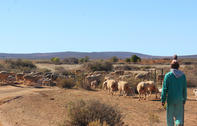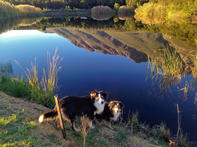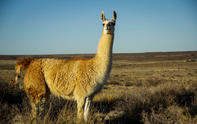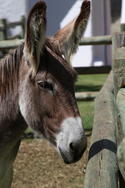
Herdsmen
A herdsman or shepherd can be one of the most valuable assets to a farmer. A good shepherd will be a natural stockman, able to easily identify when something is wrong with an animal and causing hardly any stress when tending and managing livestock.
Besides watching over the stock, they may also pro-actively prevent predation by keeping fences in a good state and taking extra precautions to protect vulnerable or sick animals against predators. It, however, is a lonely isolated job, requiring long hours away from home, especially when livestock is produced over large areas.
Many people therefore no longer want to do this job, resulting in a lot of “herding knowledge” no longer being passed down from one generation to another.
The manual for managing problem animals, by the Predation Management Forum, suggests that the use of herdsmen can breathe new life into the job market with good social, economical and environmental spin-offs, especially if the job is accompanied with good incentives, such as profit sharing or partnerships.
Guarding Dogs

Shepherds, over the years, have been using all kinds of dogs to help them protect livestock against predators. Various hybrid breeds have been used successfully, with the Turkish Anatolian Shepherd Dog being one of the best known. It has been estimated that a good guarding dog can reduce stock losses by up to 90 percent.
These are working dogs, placed with livestock at six to nine weeks of age. The dog should always be with the livestock and never be left alone in the kraal, even if only two livestock remain with it, to ensure a bond between the developing puppy and its livestock.
The dog will be useless if this bond does not form. While they should know their master, it should be imprinted on the animal that it is to guard the livestock and not the homestead, farmyard or its people. The dog should also not be allowed to run and play with the herd as it grows up, as this may endanger the animals.
The dogs should also be familiarised with other livestock or other farmers’ animals, to prevent them from seeing these animals as a threat. The dog should not be allowed to chase game and be taught to tolerate non-threatening wildlife. It won’t be able to do its job if it learns to hunt.
Alpacas

Alpacas should be raised with livestock to ensure they develop a strong bond with these animals. Once a bond has developed, they will take great care to patrol and protect their territory and chase away, spit, bite, kick and stomp any threats.
Alpacas should preferably be operated in pairs, with two being kept for 250 ewes on about 250 ha. A farmer's manual, called Predators on Livestock Farms, reports that alpacas can increase lamb percentages by up to 20 percent and reduce predation losses by about 80 percent.
Donkeys

While donkeys have traditionally be used as pack animals, they also make good guardian animals. In Kenya, for example, they have been used to protect cattle against lions.
They have strong herd instincts, so will instinctively gravitate towards and remain with a herd with which they have been raised. Mares are preferred over males, since the stallions become aggressive towards other livestock and may even cause damage to fences.
By Glenneis Kriel